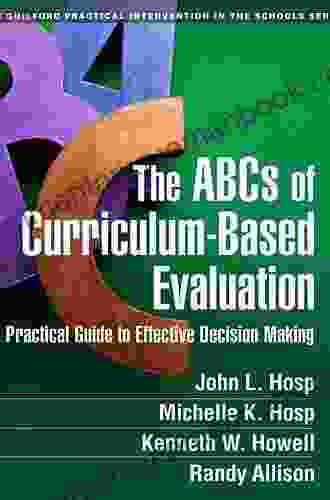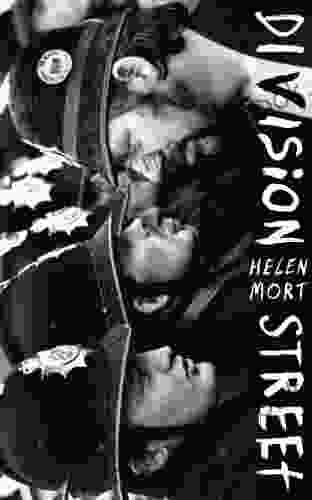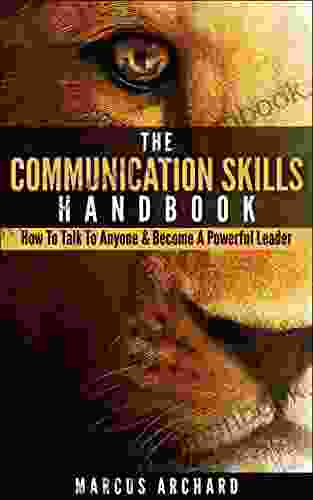The ABCs of Curriculum Based Evaluation: A Comprehensive Guide for Educators

Curriculum-Based Evaluation (CBE) is a powerful tool that can help educators make data-driven decisions to improve student learning. CBE involves collecting and analyzing data on student performance in order to identify areas where students are struggling and need additional support. It provides specific feedback on individual student performance to inform instructional decisions and improve teaching effectiveness. This guide will provide you with a comprehensive overview of the ABCs of CBE, including its benefits, how to implement it, and how to use the data to improve your teaching.
Benefits of Curriculum-Based Evaluation
There are many benefits to using CBE in the classroom. Some of the most notable benefits include:
4.6 out of 5
| Language | : | English |
| File size | : | 9504 KB |
| Screen Reader | : | Supported |
| Print length | : | 164 pages |
| X-Ray for textbooks | : | Enabled |
- Improves student learning outcomes: CBE can help educators identify students who are struggling and need additional support. By providing targeted interventions, educators can help these students catch up to their peers and improve their overall academic performance.
- Informs instructional decisions: CBE data can help educators make data-driven decisions about how to teach. For example, if data shows that students are struggling with a particular concept, the educator can provide additional instruction or support in that area.
- Promotes student self-reflection: CBE can help students become more self-aware of their strengths and weaknesses. By seeing their own data, students can identify areas where they need to improve and take steps to address those areas.
- Enhances communication between teachers and parents: CBE data can be used to communicate with parents about their child's progress. This data can help parents understand their child's strengths and weaknesses and how to support their learning at home.
How to Implement Curriculum-Based Evaluation
There are a few key steps involved in implementing CBE in the classroom:
- Identify the skills or concepts that you want to evaluate. These should be skills or concepts that are essential for student success in your content area.
- Select a data collection method. There are a variety of ways to collect data on student performance, including formative assessments, summative assessments, and observations.
- Set performance benchmarks. Once you have collected data on student performance, you need to set performance benchmarks. These benchmarks will help you determine which students are meeting expectations and which students need additional support.
- Monitor student progress. Once you have set performance benchmarks, you need to monitor student progress over time. This will help you identify students who are not making adequate progress and need additional support.
- Adjust instruction based on data. The data you collect from CBE should be used to inform your instruction. If data shows that students are struggling with a particular concept, you can provide additional instruction or support in that area.
Using CBE Data to Improve Your Teaching
CBE data can be used to improve your teaching in a variety of ways. Some of the most effective ways to use CBE data include:
- Identify areas where students are struggling. CBE data can help you identify students who are not meeting expectations and need additional support. By providing targeted interventions, you can help these students catch up to their peers and improve their overall academic performance.
- Inform instructional decisions. CBE data can help you make data-driven decisions about how to teach. For example, if data shows that students are struggling with a particular concept, you can provide additional instruction or support in that area.
- Track student progress over time. CBE data can be used to track student progress over time. This data can help you identify students who are making progress and students who are not. You can then use this information to adjust your instruction to meet the needs of all students.
- Communicate with parents about student progress. CBE data can be used to communicate with parents about their child's progress. This data can help parents understand their child's strengths and weaknesses and how to support their learning at home.
CBE is a powerful tool that can help educators make data-driven decisions to improve student learning. By collecting and analyzing data on student performance, educators can identify areas where students are struggling and need additional support. This information can be used to make instructional decisions, track student progress, and communicate with parents. By using CBE data effectively, educators can improve their teaching and help all students succeed.
4.6 out of 5
| Language | : | English |
| File size | : | 9504 KB |
| Screen Reader | : | Supported |
| Print length | : | 164 pages |
| X-Ray for textbooks | : | Enabled |
Do you want to contribute by writing guest posts on this blog?
Please contact us and send us a resume of previous articles that you have written.
 Top Book
Top Book Novel
Novel Fiction
Fiction Nonfiction
Nonfiction Literature
Literature Paperback
Paperback Hardcover
Hardcover E-book
E-book Audiobook
Audiobook Bestseller
Bestseller Classic
Classic Mystery
Mystery Thriller
Thriller Romance
Romance Fantasy
Fantasy Science Fiction
Science Fiction Biography
Biography Memoir
Memoir Autobiography
Autobiography Poetry
Poetry Drama
Drama Historical Fiction
Historical Fiction Self-help
Self-help Young Adult
Young Adult Childrens Books
Childrens Books Graphic Novel
Graphic Novel Anthology
Anthology Series
Series Encyclopedia
Encyclopedia Reference
Reference Guidebook
Guidebook Textbook
Textbook Workbook
Workbook Journal
Journal Diary
Diary Manuscript
Manuscript Folio
Folio Pulp Fiction
Pulp Fiction Short Stories
Short Stories Fairy Tales
Fairy Tales Fables
Fables Mythology
Mythology Philosophy
Philosophy Religion
Religion Spirituality
Spirituality Essays
Essays Critique
Critique Commentary
Commentary Glossary
Glossary Bibliography
Bibliography Index
Index Table of Contents
Table of Contents Preface
Preface Introduction
Introduction Foreword
Foreword Afterword
Afterword Appendices
Appendices Annotations
Annotations Footnotes
Footnotes Epilogue
Epilogue Prologue
Prologue Hayley Shaver
Hayley Shaver Rob Greenfield
Rob Greenfield Sara Sheridan
Sara Sheridan Eswar S Prasad
Eswar S Prasad Tyriek Washington
Tyriek Washington Sam Kass
Sam Kass Dale Mayer
Dale Mayer Shannon Stocker
Shannon Stocker Richelle Mead
Richelle Mead Ken Eidson
Ken Eidson Sachin Kumar
Sachin Kumar Greg Paull
Greg Paull William Sharp
William Sharp Sarah L Schuette
Sarah L Schuette Kat Mizera
Kat Mizera Marla Benavides
Marla Benavides Nika Hennes
Nika Hennes Omar Gonzalez
Omar Gonzalez Belinda Hunter
Belinda Hunter Sam Gindin
Sam Gindin
Light bulbAdvertise smarter! Our strategic ad space ensures maximum exposure. Reserve your spot today!
 Austin FordFollow ·7.8k
Austin FordFollow ·7.8k Henry JamesFollow ·9k
Henry JamesFollow ·9k Art MitchellFollow ·5.7k
Art MitchellFollow ·5.7k Julio CortázarFollow ·2.5k
Julio CortázarFollow ·2.5k Brandon CoxFollow ·12.7k
Brandon CoxFollow ·12.7k Alexandre DumasFollow ·16.5k
Alexandre DumasFollow ·16.5k Herbert CoxFollow ·10.7k
Herbert CoxFollow ·10.7k Forrest BlairFollow ·15.6k
Forrest BlairFollow ·15.6k

 Kelly Blair
Kelly BlairSheppard Lee Written By Himself: A Journey of...
In the realm of...

 George Bernard Shaw
George Bernard ShawViper Naga Brides: Unveiling the Enthralling Fantasy...
In the realm of...
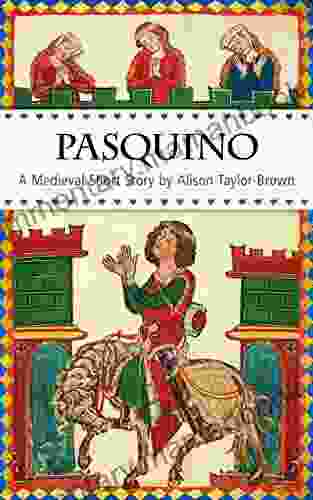
 Neil Gaiman
Neil GaimanOnce Upon a Hill in Tuscany: A Medieval Short Story
In the heart of medieval...

 Preston Simmons
Preston SimmonsBody Bereft: Exploring Loss, Love, and Legacy in Antjie...
A Poetic Requiem for the Lost:...
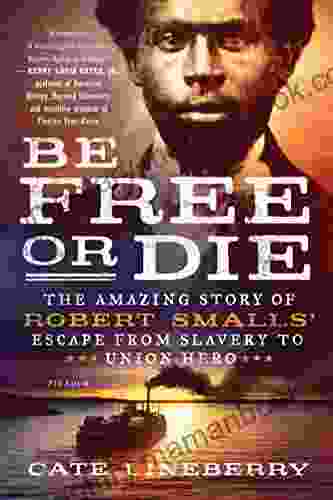
 Percy Bysshe Shelley
Percy Bysshe ShelleyThe Amazing Story Of Robert Smalls Escape From Slavery To...
The life of Robert Smalls is a testament to...
4.6 out of 5
| Language | : | English |
| File size | : | 9504 KB |
| Screen Reader | : | Supported |
| Print length | : | 164 pages |
| X-Ray for textbooks | : | Enabled |


